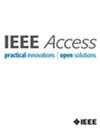基于层次深度强化学习框架的尾流自导鱼雷制导
IF 3.4
3区 计算机科学
Q2 COMPUTER SCIENCE, INFORMATION SYSTEMS
引用次数: 0
摘要
本文提出了一种新的用于尾流自导鱼雷制导的分层深度强化学习(HRL)框架,应用离散事件系统规范(DEVS)形式化来设计高级策略和奖励塑造函数。尾流自导鱼雷制导产生航向命令使鱼雷跟随目标舰艇的尾流轨迹。当目标舰躲避来袭鱼雷时,尾流轨迹变得弯曲,由于尾流探测传感器探测范围窄,往往导致鱼雷失迹。这需要一个复杂的算法来持续跟踪目标船,特别是在鱼雷在嘈杂环境中退出和重新进入尾流轨迹的情况下。虽然启发式算法可以处理典型的尾流轨迹,但开发未知轨迹的鲁棒解决方案仍然是一个重大挑战。为了解决这个问题,我们应用一种新的强化学习方法来开发引导逻辑,并将其性能与传统的基于算法的方法进行比较。通过数值仿真验证了该方法的性能和有效性。本文章由计算机程序翻译,如有差异,请以英文原文为准。
Wake Homing Torpedo Guidance Using a Hierarchical Deep Reinforcement Learning Framework
This paper proposes a novel Hierarchical Deep Reinforcement Learning (HRL) framework for wake homing torpedo guidance, applying the Discrete Event System Specification (DEVS) formalism to design high-level policies and reward shaping functions. Wake homing torpedo guidance generates course commands to enable the torpedo to follow the wake trajectory of a target ship. When the target ship evades the incoming torpedo, the wake trajectory becomes curved, often causing the torpedo to lose track due to the narrow detection range of the wake detection sensor. This necessitates a sophisticated algorithm to consistently track the target ship, particularly in scenarios where the torpedo exits and re-enters the wake trajectory in noisy environments. While heuristic algorithms can handle typical wake trajectories, developing a robust solution for unknown trajectories remains a significant challenge. To address this, we apply a novel reinforcement learning approach to develop the guidance logic and compare its performance with a conventional algorithm-based method. The performance and effectiveness of the proposed approach are demonstrated through numerical simulations.
求助全文
通过发布文献求助,成功后即可免费获取论文全文。
去求助
来源期刊

IEEE Access
COMPUTER SCIENCE, INFORMATION SYSTEMSENGIN-ENGINEERING, ELECTRICAL & ELECTRONIC
CiteScore
9.80
自引率
7.70%
发文量
6673
审稿时长
6 weeks
期刊介绍:
IEEE Access® is a multidisciplinary, open access (OA), applications-oriented, all-electronic archival journal that continuously presents the results of original research or development across all of IEEE''s fields of interest.
IEEE Access will publish articles that are of high interest to readers, original, technically correct, and clearly presented. Supported by author publication charges (APC), its hallmarks are a rapid peer review and publication process with open access to all readers. Unlike IEEE''s traditional Transactions or Journals, reviews are "binary", in that reviewers will either Accept or Reject an article in the form it is submitted in order to achieve rapid turnaround. Especially encouraged are submissions on:
Multidisciplinary topics, or applications-oriented articles and negative results that do not fit within the scope of IEEE''s traditional journals.
Practical articles discussing new experiments or measurement techniques, interesting solutions to engineering.
Development of new or improved fabrication or manufacturing techniques.
Reviews or survey articles of new or evolving fields oriented to assist others in understanding the new area.
 求助内容:
求助内容: 应助结果提醒方式:
应助结果提醒方式:


